1576
The highest mountain in the Solar System (7 photos)
Olympus (lat. Olympus Mons) - an extinct volcano on Mars, the highest mountain in the solar system. Before flying spacecraft (which showed that the Olympus - the mountain), the place was known to astronomers as Nix Olympica («Snows of Olympus" - due to a higher albedo).

The height of Mount Olympus - 27 km to the base, and 25 km to the average level of the surface of Mars. This is several times higher than the highest mountains on Earth. Olympus extends to 540 km wide and has steep slopes at the edges up to 7 km. Causes of these giant cliffs have not yet found a convincing explanation.
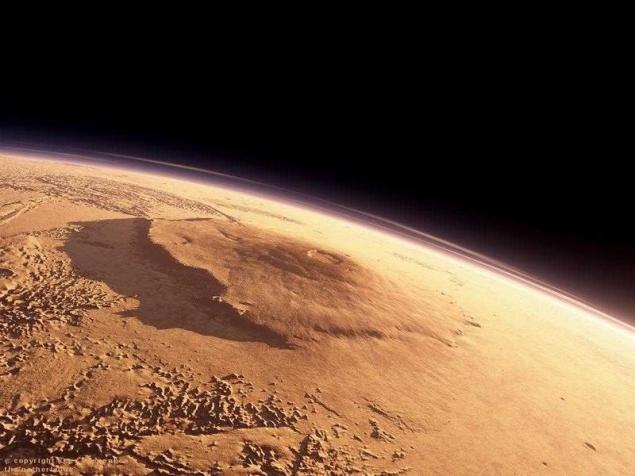
The length of the volcanic caldera of Olympus - 85 km, width - 60 km. The depth of the caldera reaches 3 km due to the presence of six volcanic craters. For comparison - the largest in the world at the Mauna Loa volcano in Hawaii crater diameter is 6, 5 km away.
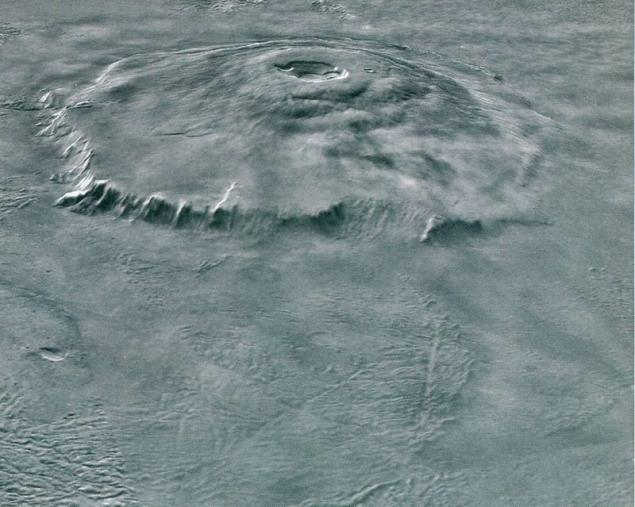
Atmospheric pressure at the top of Mount Olympus is only 2% of the pressure characteristic of the average Martian surface (for comparison - the pressure on the top of Mount Everest is 25% of that at sea level).
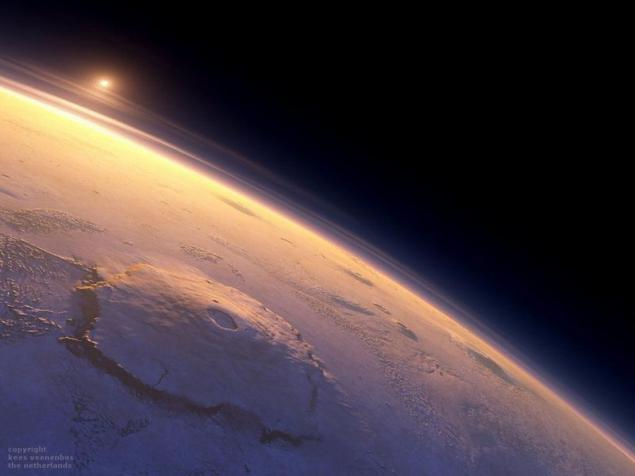
Olympus takes such a large area that can not be seen completely from the surface of the planet (the distance required for viewing the volcano is so great that it will be hidden because of the curvature of the surface). So full of Olympus can be seen only from the air or orbit. Similarly, if you stand on the highest point of the volcano, its slope will go beyond the horizon.
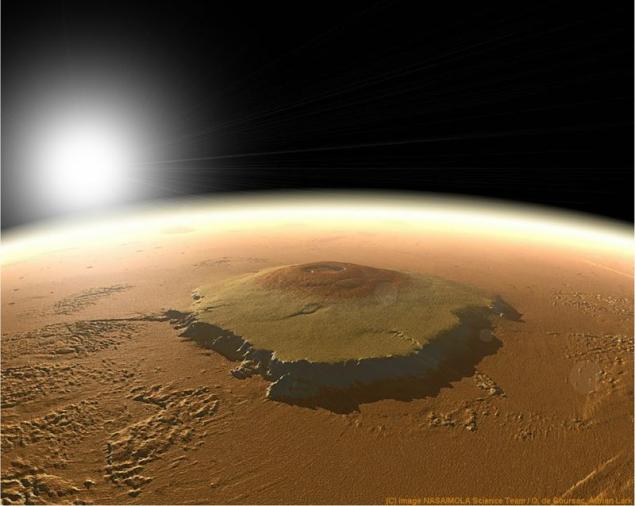
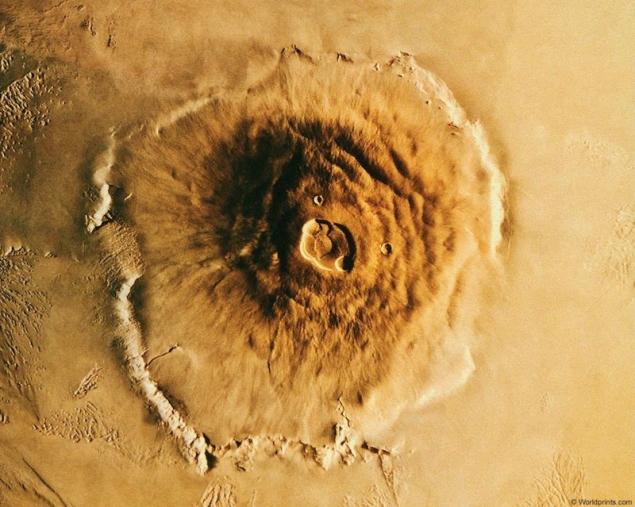

Source: trasyy.livejournal.com

The height of Mount Olympus - 27 km to the base, and 25 km to the average level of the surface of Mars. This is several times higher than the highest mountains on Earth. Olympus extends to 540 km wide and has steep slopes at the edges up to 7 km. Causes of these giant cliffs have not yet found a convincing explanation.

The length of the volcanic caldera of Olympus - 85 km, width - 60 km. The depth of the caldera reaches 3 km due to the presence of six volcanic craters. For comparison - the largest in the world at the Mauna Loa volcano in Hawaii crater diameter is 6, 5 km away.

Atmospheric pressure at the top of Mount Olympus is only 2% of the pressure characteristic of the average Martian surface (for comparison - the pressure on the top of Mount Everest is 25% of that at sea level).

Olympus takes such a large area that can not be seen completely from the surface of the planet (the distance required for viewing the volcano is so great that it will be hidden because of the curvature of the surface). So full of Olympus can be seen only from the air or orbit. Similarly, if you stand on the highest point of the volcano, its slope will go beyond the horizon.



Source: trasyy.livejournal.com
The destruction of counterfeit iPhones (2 pics + 1 video)
Russian car industry on the verge of a breakthrough























